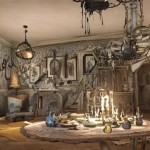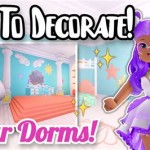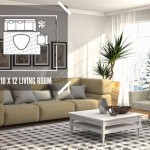How to Decorate a Long Narrow Great Room
A long, narrow great room can present a unique challenge for interior design. The elongated shape can make a room feel cramped and awkward. However, with thoughtful planning and strategic design choices, you can transform this space into a welcoming and functional gathering area. This article will explore essential strategies for decorating a long, narrow great room, focusing on maximizing space, creating visual balance, and incorporating furniture and decor that complement the room's proportions.
Maximizing Space
The key to decorating a long, narrow great room is to create the illusion of more space. This can be achieved through careful furniture placement, strategic use of color, and incorporating elements that visually expand the room. One effective technique is to place furniture away from the walls, opening up the floor space and providing a sense of airiness. This is especially important in a narrow room, where pushing furniture against the walls can make the room feel even more constricted.
Another useful strategy is to use lighter paint colors, such as whites, creams, or pastels. Lighter colors reflect light and create a larger, more expansive feel, whereas darker colors can make a room seem smaller. Avoid using bold, contrasting colors, which can create an overwhelming effect in a long, narrow space. Instead, incorporate soft, muted shades that will help to visually elongate the room.
Mirrors can also be valuable tools for maximizing space. Strategically placed mirrors can reflect light and create the illusion of depth, making a room appear larger than it actually is. Consider placing a large mirror on a wall opposite a window or at the end of the room to amplify natural light and create a sense of spatial expansion.
Balancing the Layout
The arrangement of furniture is crucial for creating a visually balanced and comfortable layout in a long, narrow great room. To prevent the room from feeling overly elongated, consider using furniture to divide the space into distinct areas. For example, you can use a rug to define a seating area, a console table to separate the living room from the dining area, or a bookshelf to create a cozy reading nook.
When placing furniture, prioritize creating a sense of flow and movement. Avoid placing furniture directly in the middle of the room, as this can block the line of sight and create a sense of congestion. Instead, arrange furniture along the walls or in a staggered formation to create natural pathways and enhance the flow of the room.
It is also important to consider the scale of furniture. Opt for pieces that are proportionate to the room's size. Oversized furniture can make a narrow room feel even smaller, while small furniture can get lost and create a disproportional look.
Incorporating Furniture and Decor
Choosing the right furniture and decor is essential for achieving a stylish and functional great room. Consider the purpose of the room and choose furniture that aligns with the intended activities. If your great room serves as a multi-functional space, select versatile furniture that can adapt to various needs, such as a sofa bed for guests, a coffee table with built-in storage, or a multi-purpose entertainment center.
When selecting decor, think about creating visual interest without overwhelming the space. Use a limited color palette to unify the room, and incorporate textures and patterns to add depth and dimension. Avoid overcrowding the room with too many accessories or clutter. Instead, focus on carefully chosen statement pieces, such as a large artwork, a unique rug, or a stylish lamp.
Vertical elements can help to draw the eye upwards, minimizing the emphasis on the room's length. Consider using tall floor lamps, hanging plants, or bookshelves to create a sense of verticality. These elements can also add a sense of sophistication and elegance to the space.
Lighting is also a key element in great room design. Use a combination of ambient, task, and accent lighting to create a welcoming and functional atmosphere. Consider incorporating a chandelier or pendant light to create a focal point in the center of the room, and use sconces or task lighting to highlight specific areas.
By embracing these strategies and taking the time to carefully plan the design, you can transform your long, narrow great room into a beautiful and functional living space. Remember to consider the room's unique shape, maximize space, create a balanced layout, and choose furniture and decor that complement the room's proportions. With the right approach, you can create a great room that is both stylish and comfortable.

How To Decorate A Long Narrow Living Room So Much Better With Age

How To Arrange Furniture In A Long Narrow Living Room Solutions For Tricky Spaces

How To Maximize The Potential In A Long Narrow Living Room Patticake Wagner Style

How To Decorate A Long Narrow Living Room So Much Better With Age
:max_bytes(150000):strip_icc()/decorate-long-narrow-living-room-2213445-04-96b1f74b88d343cba835f6e13fbd50df.jpg?strip=all)
Ideas For Decorating A Long And Narrow Living Room

How To Arrange Furniture In A Long Narrow Living Room Solutions For Tricky Spaces

Un Awkward The Living Space Smart Ways To Decorate A Long And Narrow Room Hipcouch Complete Interiors Furniture

How To Decorate A Long Narrow Living Room Lesley Myrick Interior Design Boutique Designer In Macon Ga
How To Designing Your Long Narrow Living Room Interior Design Tips The House

How To Decorate A Long Narrow Living Room Furniturebox







